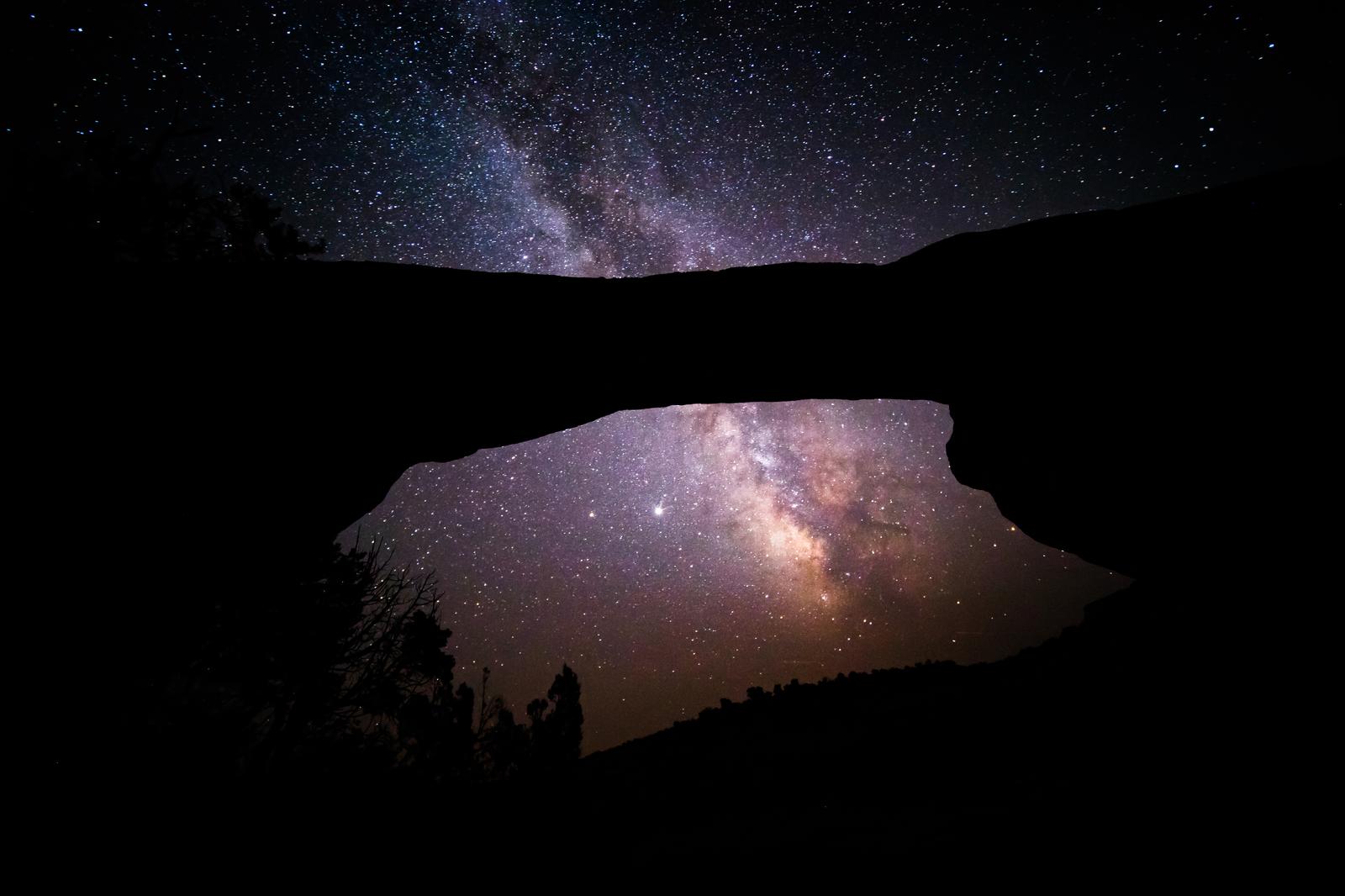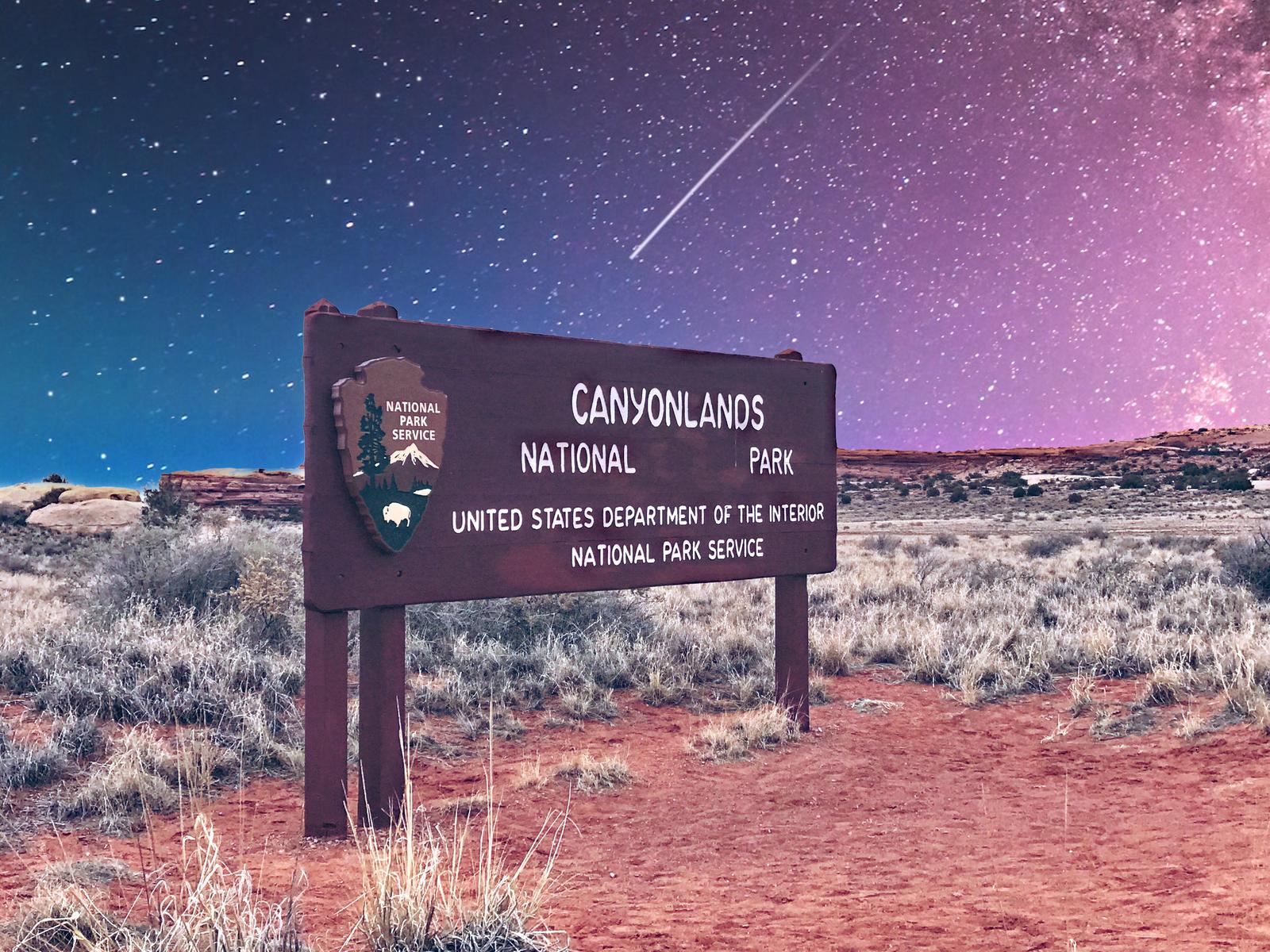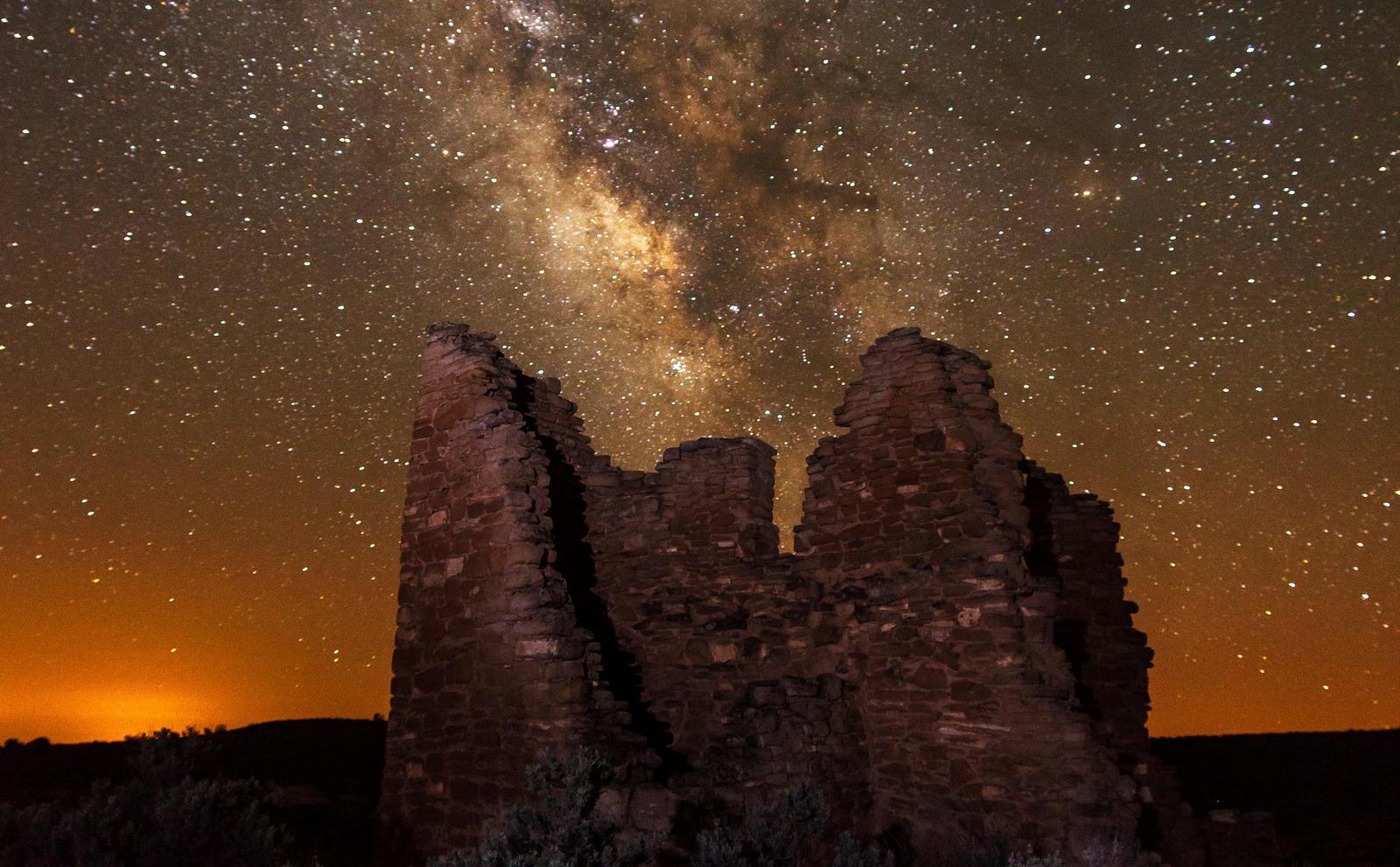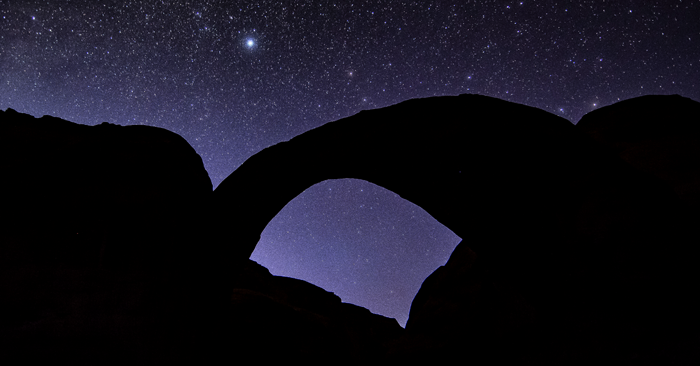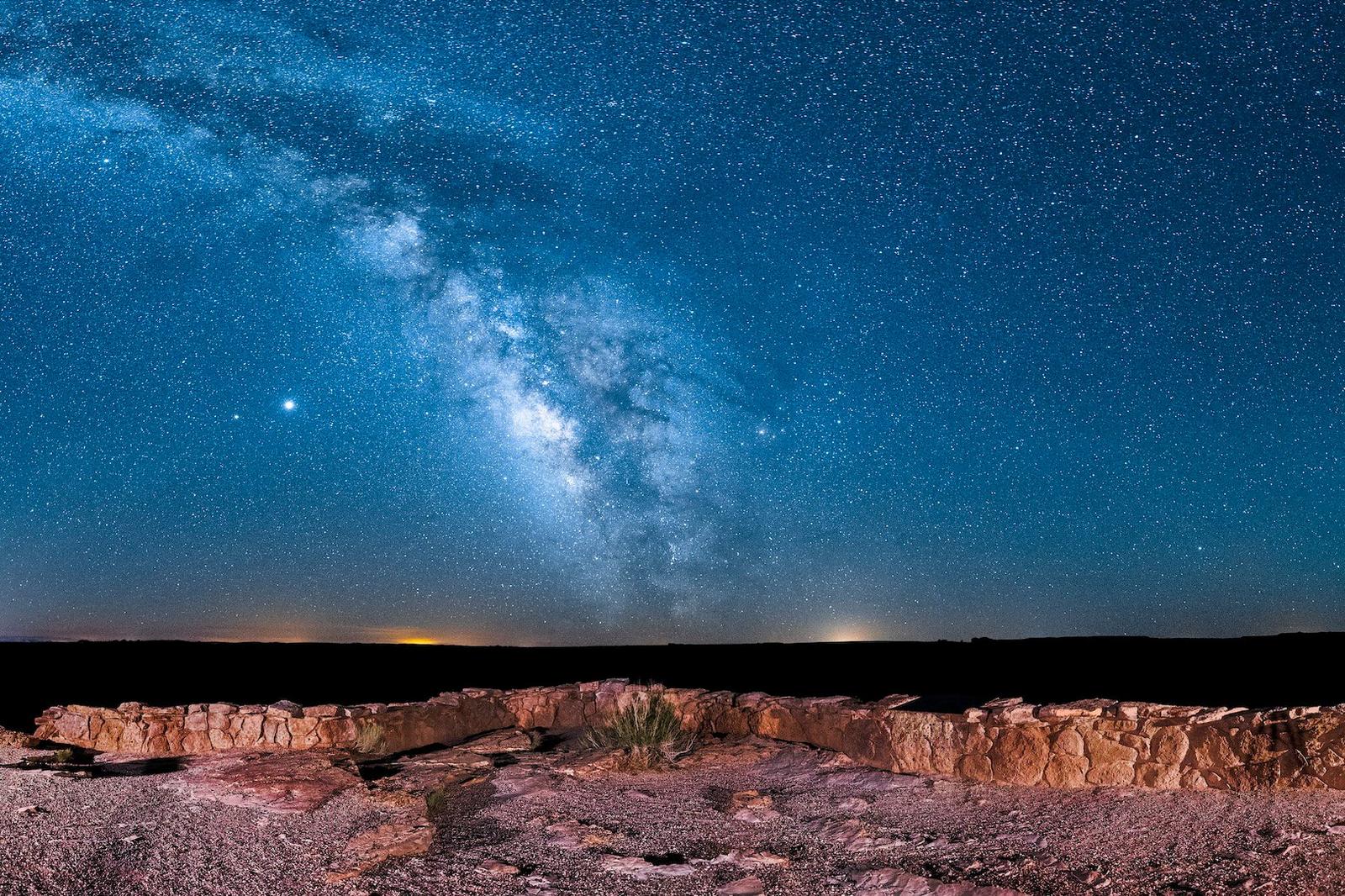Natural Bridges National Monument was designated the first International Dark Sky Park in the world! This monument has three of the world’s largest natural stone bridges that, when made a silhouette to the night sky, are a beautiful experience for anyone looking for a unique adventure. During the summer months, ranger-led astronomy programs are available in the park for anyone interested in learning more about the thousands of stars in the sky.
Dark Sky Parks
Utah’s Canyon Country is perfect for stargazers, astronomers, night photographers and nature lovers alike. Home to four International Dark Sky Parks and one Dark Sky Sanctuary, the area has been designated for its exceptional starry night skies and nocturnal environment.
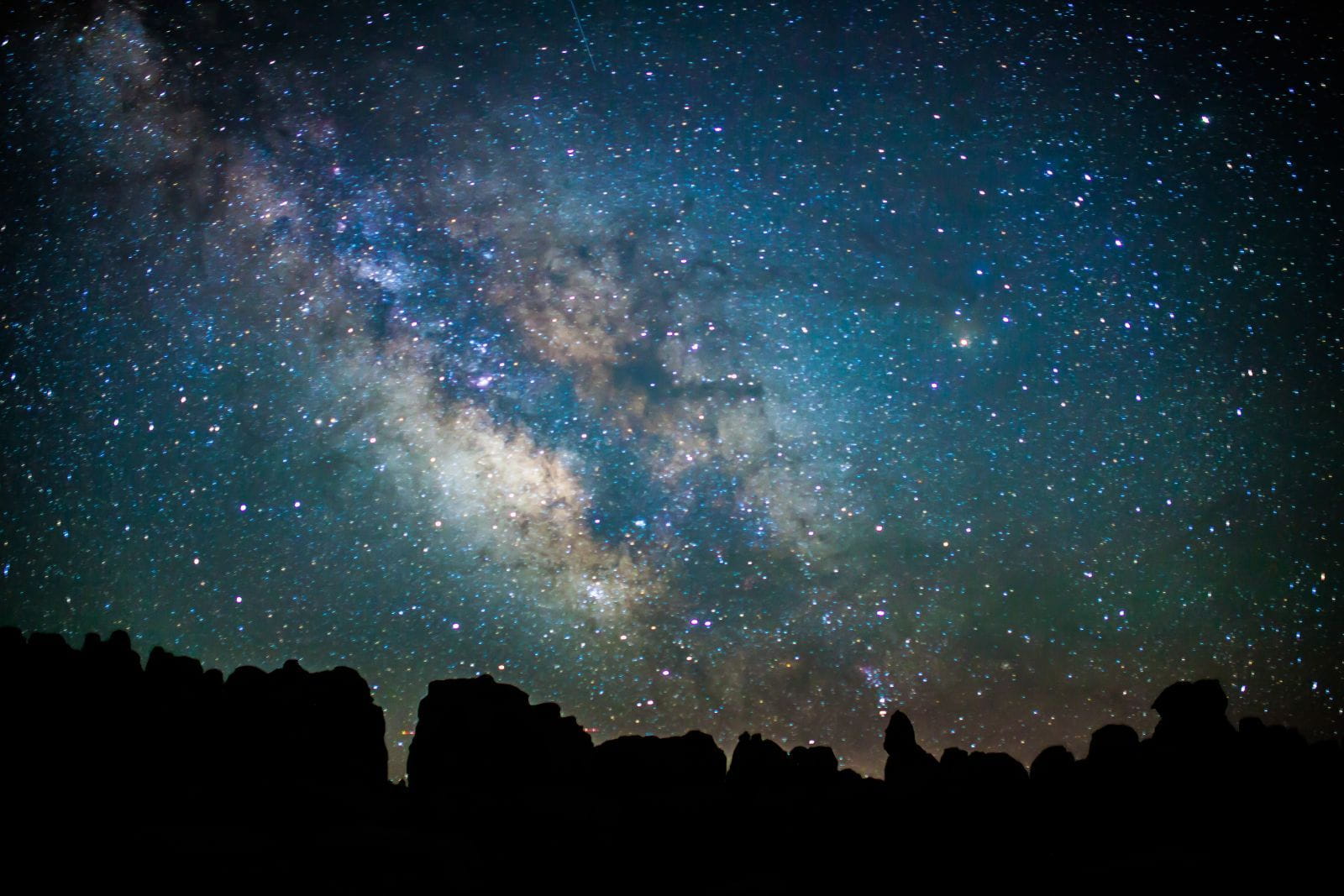
Usually, in urban city environments, fewer than 500 stars may be visible. Compare this to up to 15,000 stars that can be seen in the darkened, desert landscapes of Utah’s Canyon Country. These isolated and low-populated areas amaze world travelers with the glow and beautiful skyscape that is unique to only this area. When visitors travel through the area, many are often surprised by the magnificence of the region’s night skies.
During the Summer, various areas have Ranger-led Astronomy Programs that visitors can participate in to learn more about the night sky. For more information about astronomy programs, contact a local visitor center or park service.
Visit these five Dark Sky Places to see the multitude of bright stars for yourself.
